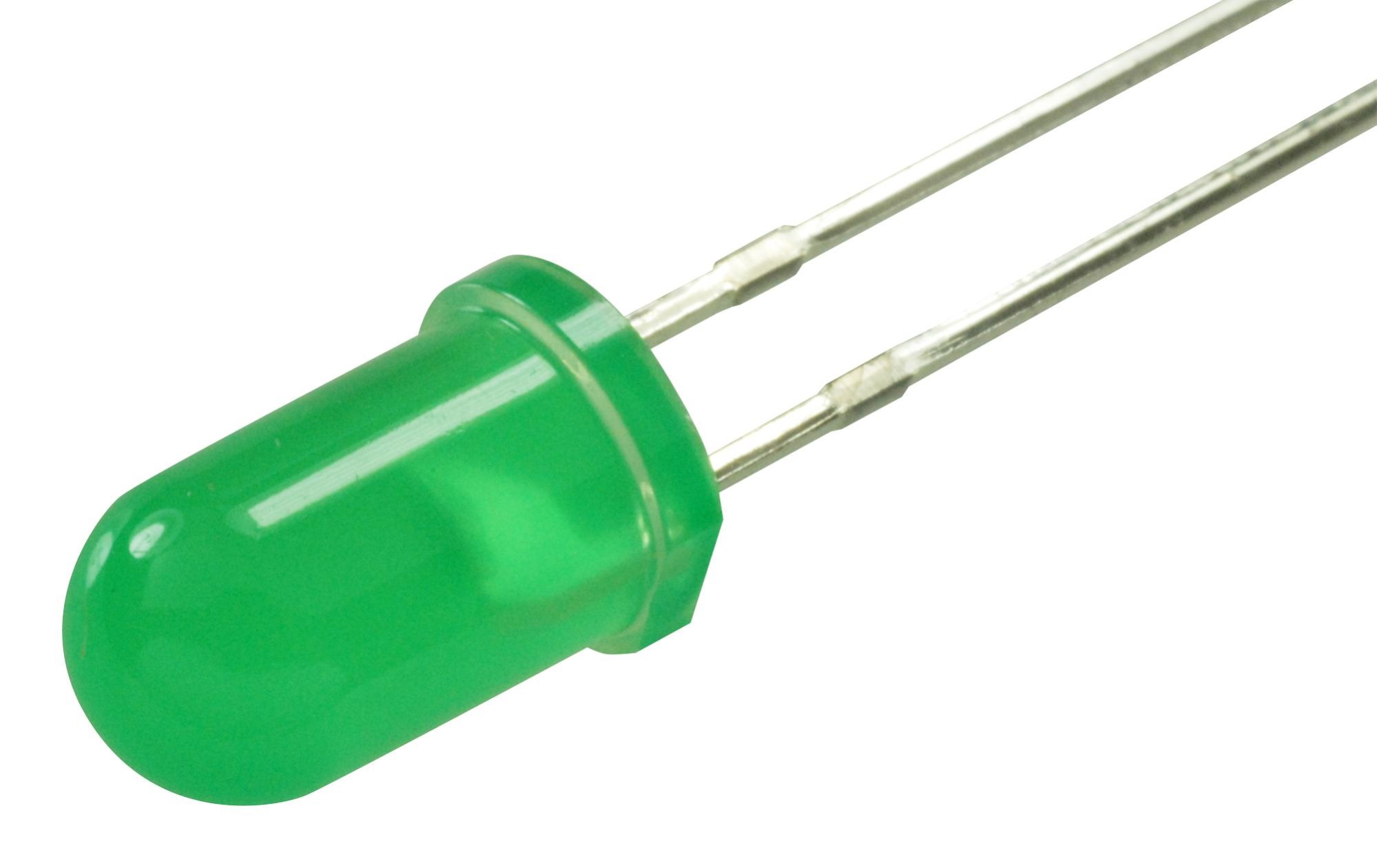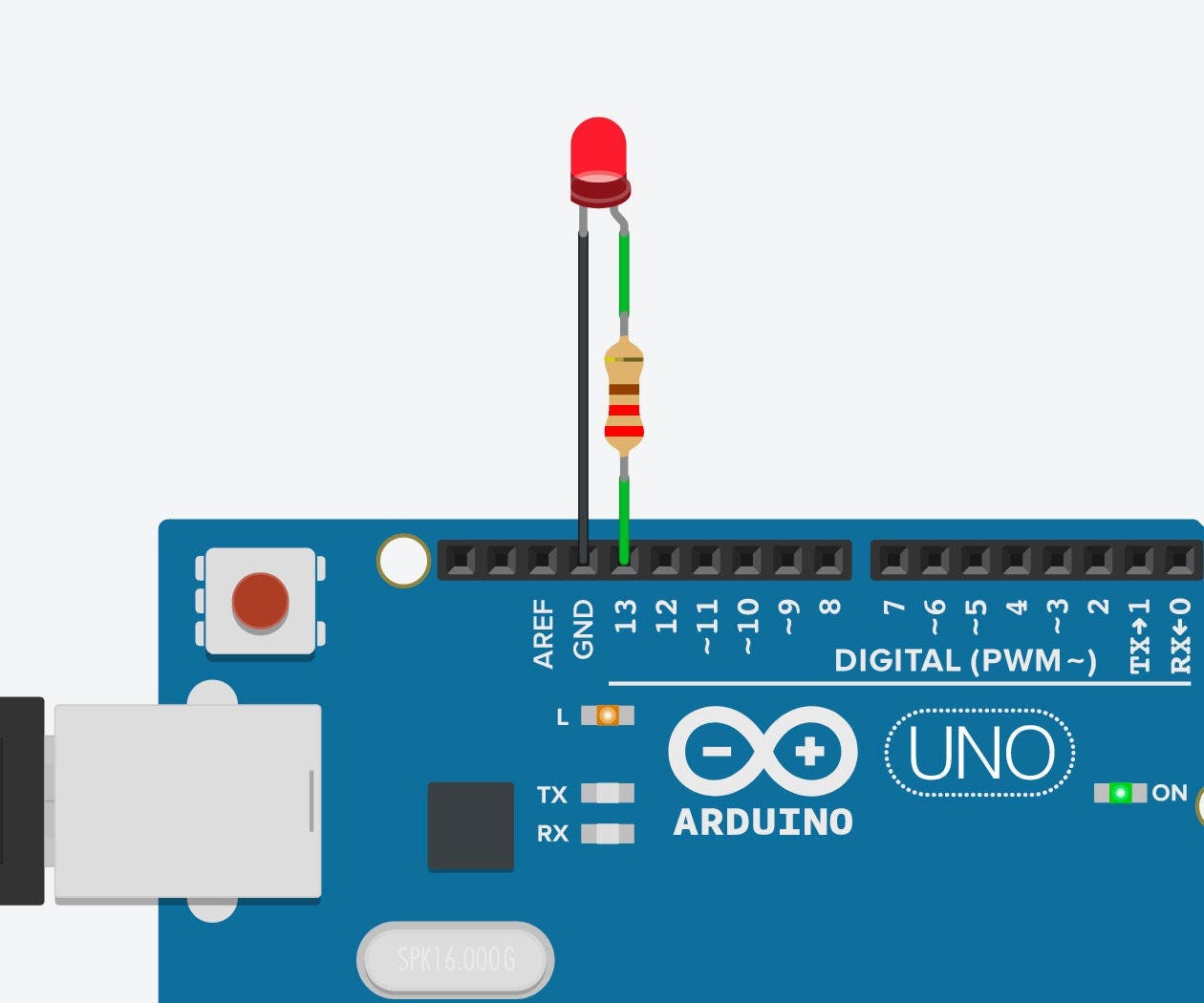








5MM GREEN LED
The 5mm Round Green LED 2Pin Through Hole Green Diffused LED is a versatile and commonly used electronic component that is perfect for a variety of applications. Whether you are building a DIY project or repairing an existing device, this LED is an essential addition to your toolbox.
₹ 3 ₹6
6
Add FAQ
A 5mm green LED is a type of Light Emitting Diode (LED) that emits green light when an electrical current passes through it. The 5mm refers to the diameter of the LED, which is a standard size commonly used in various electronic applications. LEDs are widely used due to their low power consumption, long lifespan, and bright output.
Key Features of a 5mm Green LED:
-
Size:
- The 5mm refers to the physical size of the LED. It has a 5mm diameter and is typically round in shape. This size is one of the most common for general-purpose LEDs and is widely used in both DIY electronics and commercial applications.
-
Color:
- Green LEDs emit light in the green part of the visible spectrum, typically between 520 to 570 nanometers (nm). They are often used to signal the "on" state or to indicate a condition like "active," "go," or "safe."
-
Voltage and Current:
- Forward voltage: Typically, a green LED has a forward voltage of around 2.0V to 3.5V (depending on the specific type).
- Current: The typical operating current is usually around 20mA for standard LEDs, though it can vary depending on the application. Exceeding this current can damage the LED.
-
Power Consumption:
- Green LEDs are relatively low power compared to incandescent bulbs or other light sources. They usually consume a few milliwatts of power, which makes them energy-efficient.
-
Lifespan:
- LEDs have a very long lifespan, often lasting between 25,000 to 50,000 hours, which is much longer than other light sources like incandescent or halogen bulbs.
-
Viewing Angle:
- The 5mm green LED typically has a narrow to wide viewing angle, usually ranging from 20° to 60°. This determines how far the light spreads out when viewed from different angles.
-
Housing:
- The 5mm LED is usually housed in a transparent or diffused plastic casing. The diffused version has a frosted appearance, which can spread the light more evenly, while the transparent version tends to emit a sharper, more focused beam of light.
Typical Applications of 5mm Green LEDs:
-
Indicator Lights:
- Green LEDs are commonly used as indicator lights to show that a device is powered on or in an active state. For example, they can be used in power indicators, status indicators on various appliances, and on/off status lights for electronic devices.
-
Electronic Projects:
- In DIY electronics, especially with Arduino, Raspberry Pi, and other microcontroller-based systems, 5mm green LEDs are often used for visual feedback, such as signaling when a certain condition is met (e.g., "success" or "active" status).
-
Displays:
- Green LEDs are used in LED displays, especially for low-power, simple numeric displays, or in traffic signals, where green light indicates "go" or "safe."
-
Signal and Communication Systems:
- Green LEDs are frequently used in signal lights, for example, in automated machines or control systems where they indicate operational status or correct functionality.
-
Toys and Gadgets:
- Many toys and gadgets use 5mm green LEDs for aesthetic lighting effects or to show that a part of the device is functioning (such as a light-up feature).
-
Consumer Electronics:
- Green LEDs are also commonly used in consumer electronics to indicate the power status, charging indicators, and active modes for devices such as speakers, headphones, and chargers.
-
Lighting Effects:
- 5mm green LEDs are sometimes used in light decorations, novelty items, or signage where bright, small lighting solutions are needed.
How to Use a 5mm Green LED:
-
Basic Circuit:
- In a simple LED circuit, the green LED is connected in series with a current-limiting resistor. The resistor is needed to limit the current through the LED and prevent damage.
- For instance, if you're using a 5V power supply and the LED has a forward voltage of 2.2V with a desired current of 20mA, you would calculate the appropriate resistor value using Ohm's Law:
Where:
- VsupplyV_{supply} is the power supply voltage (5V),
- VforwardV_{forward} is the forward voltage of the LED (approximately 2.2V for green LEDs),
- II is the current through the LED (20mA or 0.02A).
Substituting the values:
R=5V−2.2V0.02A=2.8V0.02A=140 ΩR = rac{5V - 2.2V}{0.02A} = rac{2.8V}{0.02A} = 140 OmegaYou would need a 140-ohm resistor in series with the LED to ensure that the current is limited to a safe value.
-
Arduino Example Code: If you want to use a 5mm green LED in a simple Arduino project, here’s an example of how you could set it up to blink:
int ledPin = 13; // Pin to which the LED is connected void setup() { pinMode(ledPin, OUTPUT); // Set the LED pin as output } void loop() { digitalWrite(ledPin, HIGH); // Turn on the LED delay(1000); // Wait for 1 second digitalWrite(ledPin, LOW); // Turn off the LED delay(1000); // Wait for 1 second }In this example, the LED is connected to pin 13 on the Arduino, and it will blink on and off every second.
Conclusion:
The 5mm green LED is a standard, versatile component in electronics, useful for indicating power, status, and feedback in a variety of projects. Its low power consumption, long lifespan, and compact size make it an excellent choice for DIY electronics, lighting, indicators, and visual effects.

0 Reviews For this Product












2.jpeg&width=225&quality=80)
2.jpeg&width=225&quality=80)
.jpeg&width=225&quality=80)

